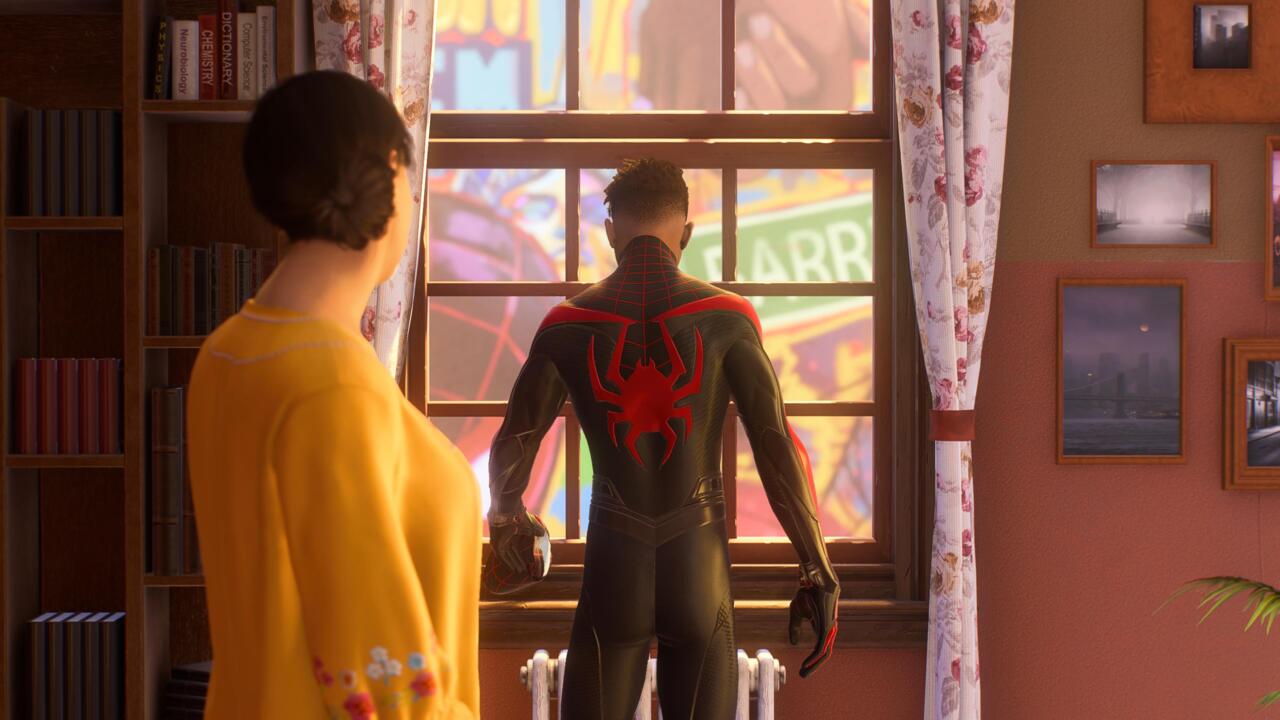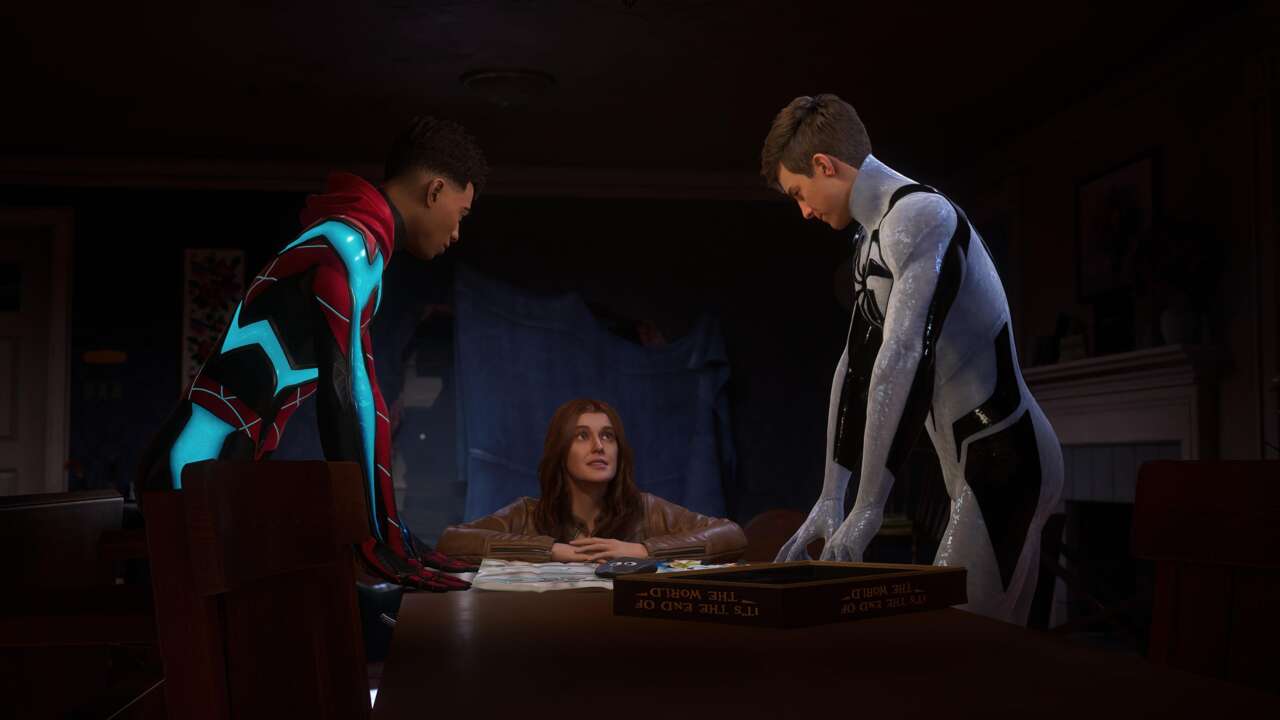Marvel’s Spider-Man 2 is fairly formulaic as far as sequels go. The reunion of Insomniac Games’ take on Peter Parker and Miles Morales builds upon past foundations, adding just enough to reach new if unsurprising heights. It’s in the efforts to stay close to its predecessors, however, that a key differentiator sets in. With the focus on bringing back lesser-known characters while fleshing out self-contained depictions of the friendly neighborhood spiders, the story sidelines Marvel Cinematic Universe expectations in structure and spirit, creating a stronger narrative as a result.
Editor’s note: Marvel’s Spider-Man 2 spoilers to follow
Avengers: Endgame was released a year after Marvel’s Spider-Man, with Marvel’s Spider-Man: Miles Morales following a year later. Ever since, the MCU has attempted to rekindle the spotlight, to varying results. It’s safe to say the film conglomerate doesn’t draw the eyes it once did. But its influential tidal wave, for better or worse, still ripples over Marvel-related media, including the video game space.
The first Spider-Man felt pretty topical in terms of movie tie-ins. Primarily featuring the Sinister Six as the cast of villains, characters like Doctor Octopus, Vulture, and Electro immediately resonated with their film counterparts. Sure, the Sinister Six are an emblem of Spider-Man’s canon since time immemorial (or 1964, if you want to be specific), but they were also familiar faces at the time. This includes Kingpin, too, thanks to the attention the character received in Netflix’s Daredevil.
From the outside, Spider-Man 2 seemed bound to follow similar steps, this time with a larger reach. Once the character was corporately introduced to the MCU for Captain America: Civil War and Spider-Man: Homecoming, followed by a reintroduction back in 2019, Sony’s bigger bet on villains has only strengthened. A third Venom film is set to release next year, alongside the introduction to Kraven the Hunter. Both characters are featured prominently in Insomniac’s story, with Sandman, Mysterio, and Lizard all playing their part as well.
In conjunction with decades of comic-book storylines to draw from, most of the aforementioned characters already had film preconceptions set upon them. It would have been easy to just follow those blueprints with some slight variations, capitalizing on pre-existing, safer routes. Although the multiverse is unsurprisingly present, it’s only for a collectible-related mission that rewards you with an unexpected scene, as opposed to the obvious nod you’d come to expect. The same can be said about the story, which goes as far as to feature a mission around a very MCU-coded Doctor Strange scenario. But it’s delivered in a short and fleeting manner–it’s a mere friendly wink to the audience while proudly displaying the PS5’s capabilities around its SSD before moving on to the next objective.
It’d be naive to think Insomniac would pass on the opportunity to include nods like this, or looping in familiar villains from the past and future of the larger Spider-Man canon. Thankfully, as a few hours into the game gradually makes clear, it all acts as an allure for people to step into another dimension, one willing to follow its own rules around heroic perceptions.
Throughout the events of Spider-Man 2, the spotlight is shared across the larger cast of characters. Mister Negative returns as the main rival of Miles, expanding and, eventually closing, the narrative threads and personal stakes that started in the first game. Yuri Watanabe, expanding on The City That Never Sleeps DLC, officially takes the place of Wraith in a series of side missions. It’s a smaller role compared to Negative–one simultaneously suffocated when you discover it’s a vehicle to tease another villain, Carnage, making an eventual appearance in the Insomniac canon–but equally important for Peter.
In a similar vein to The Spot in Spider-Man: Across the Spider-Verse, it’s the characters found off the beaten path who are granted the opportunity to shine under a new light. It’s hard to imagine the likes of Tombstone or Hammerhead getting a starring role before Scorpion or Rhino. In a post-Into the Spider-Verse world, a film that primarily featured The Prowler as a villain and catalyst for Miles’ arc, the shackles have begun to loosen.
While live-action films continue to largely be quite stubborn about their antagonists unless they’re methodically teased in previous movies–a recent example of this being Donald Glover’s rendition of Prowler with two cameo appearances in the span of six years–Insomniac took note that audiences were starting to grow exhausted of the MCU, and were looking for new appearances.

Not only is Prowler a prominent character in the Miles Morales spin-off, but the sequel elevates the premise up a notch by toying with expectations of more widely known characters as well. MJ returns with a series of stealth sections that are louder and more frenetic than the first game, gradually carving her own space in the story, to the point of being a third protagonist in the last leg of the story. She also takes the role of Scream after a Symbiote takes over her, a villain with a fairly different origin story in the comics. Harry Osborn takes the mantle of Venom, instead of the go-to choice of Eddie Brock, while Peter receives Anti-Venom powers, a character that is effectively an anti-hero in the larger universe.
Similar to the Spider-Verse movies, Spider-Man 2 achieves an identity on its own when it largely ignores the modus operandi of the MCU, and places its beliefs in its universe instead. It’s a fine line to web-sling over–after all, Across the Spider-Verse falters in this principle as well, its predecessor’s independence being compromised by a clear obligation to nod at future MCU films, becoming yet another vehicle for “this character will return” moments. But Insomniac’s commitment to its big swings, even if not all of them stick the landing, is a breath of fresh air.
Spider-Man 2 is, like the entries that precede it, already trapped in a new cinematographic tidal wave. Miles Morales is on the path toward his live-action treatment. Silk, teased in an after-credits scene, is also getting her movie. Meanwhile, Insomniac is already a passenger on the X-Men bandwagon, the latest consolidation between Marvel and Sony, signalized by recent examples like the post-credit scene in The Marvels. There’s an array of X-Men easter eggs to find in the sequel, but most notably, the developer is working on a Wolverine game, which will undoubtedly coincide with this new MCU phase.
A few years ago, this would have been seen as yet another worrying picture, with a founded expectation of seeing the likes of Peter Parker and Miles Morales treading familiar grounds. But if there’s a lesson that Insomniac has learned, it’s that it’s always worth challenging existing pre-conceptions. Both characters and stories, when given the chance, can outgrow past traditions–they can let go of the web imposed on them to build their own threads instead.
